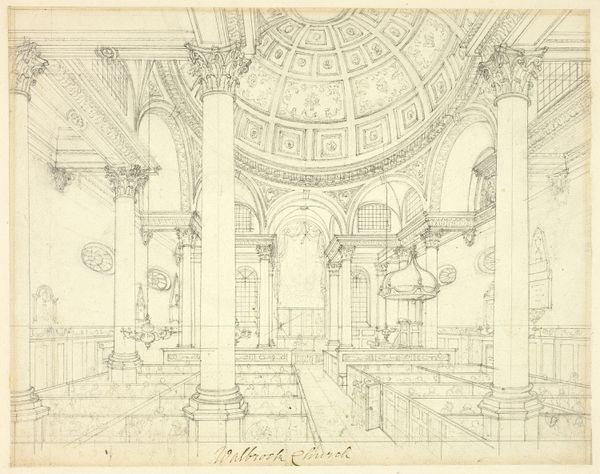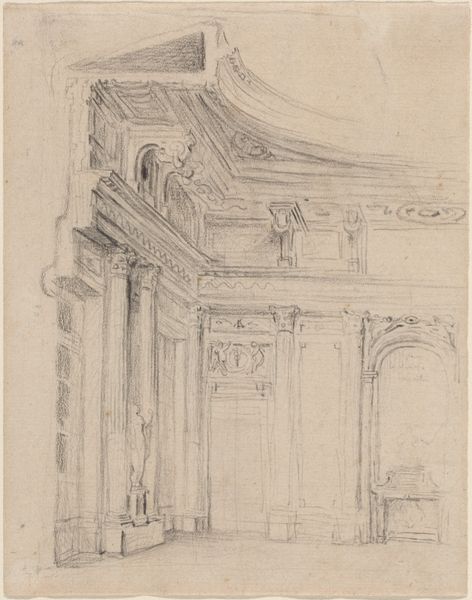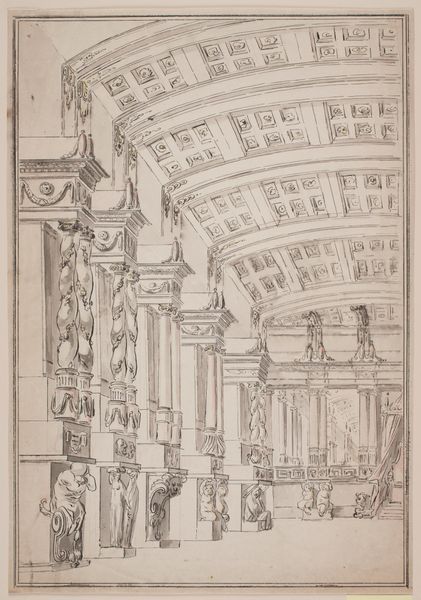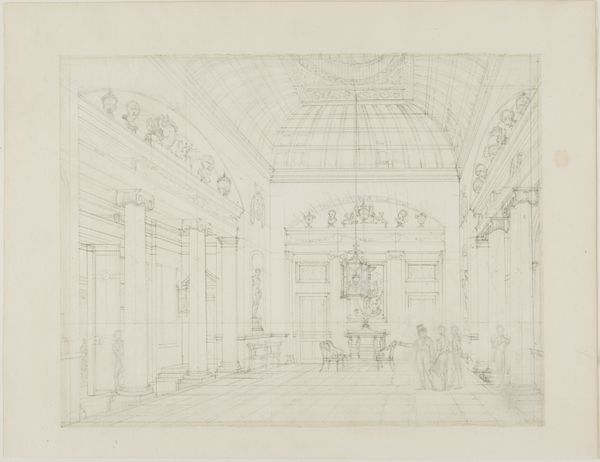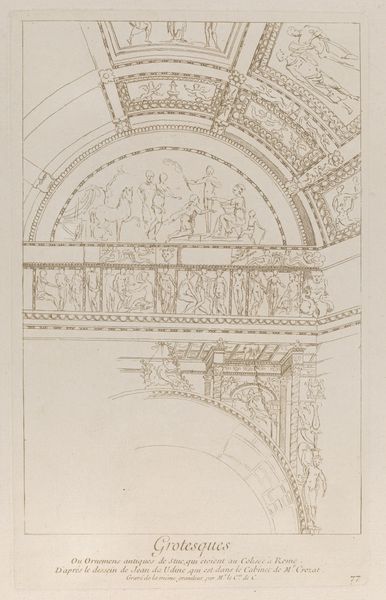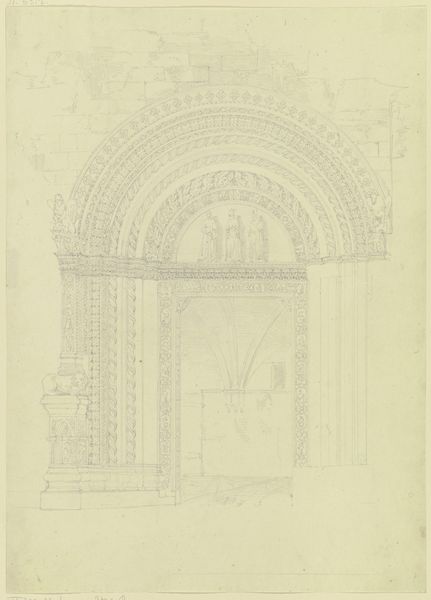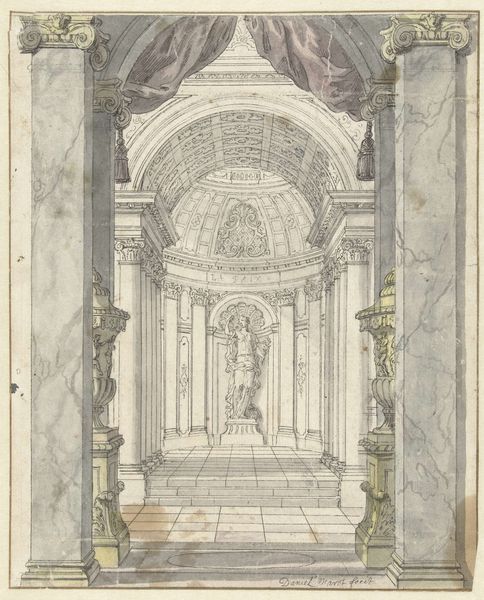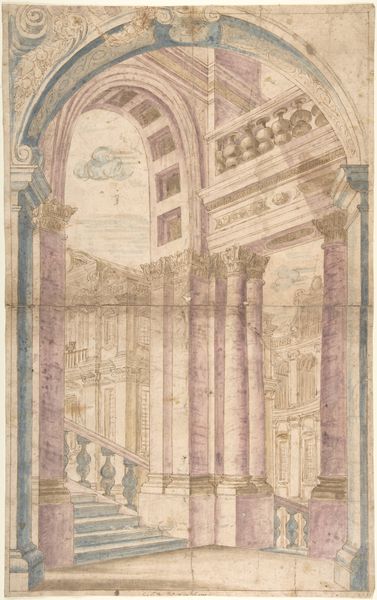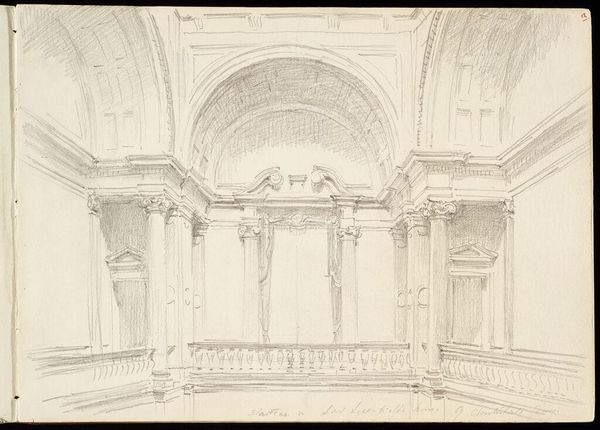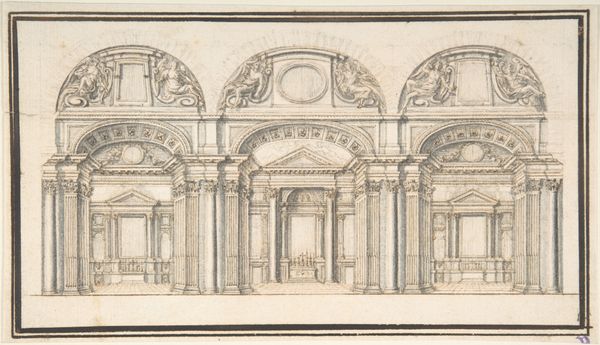
Study for St. Paul's Cathedral, from Microcosm of London c. 1809
0:00
0:00
drawing, print, paper, graphite
#
drawing
# print
#
landscape
#
perspective
#
paper
#
form
#
england
#
line
#
graphite
#
cityscape
#
history-painting
Dimensions: 258 × 199 mm
Copyright: Public Domain
Editor: This is Augustus Charles Pugin's "Study for St. Paul's Cathedral, from Microcosm of London," created around 1809 using graphite, pen, and print on paper. I am struck by its almost dreamlike quality. The delicate lines capture such grand architecture, and yet it feels so ephemeral. What symbols or underlying meanings do you perceive in it? Curator: It is fascinating how Pugin uses linear perspective to not only depict the physical space of St. Paul’s, but to invoke a sense of the sacred. The lines draw our eye upwards, toward the heavens represented by the dome. Do you notice the figures in the foreground? Editor: Yes, they seem quite small in comparison to the architecture, almost insignificant. Curator: Precisely! They underscore the power and longevity of the Church, dwarfing the individual. St. Paul's itself, rebuilt after the Great Fire of London, is a symbol of resilience and renewal. The image acts as a visual memory, connecting the viewer to England’s historical and religious identity. Consider the weight of that cultural memory embodied in a single architectural form. Editor: So the architecture becomes more than just a building. It becomes a vessel for conveying societal values. The use of line is really important, right? It makes it look ethereal, as if those values are ideals more than current values? Curator: Absolutely. It's a representation of ideal space, divine space. The artist uses light to imply hope in those values that society is inspired to follow. Editor: It’s amazing how a simple drawing can hold so much symbolic weight. Thank you for revealing those layers. I see the print in a new light. Curator: My pleasure! Recognizing these symbols enriches our understanding and appreciation for how cultural memory shapes visual representation.
Comments
No comments
Be the first to comment and join the conversation on the ultimate creative platform.
